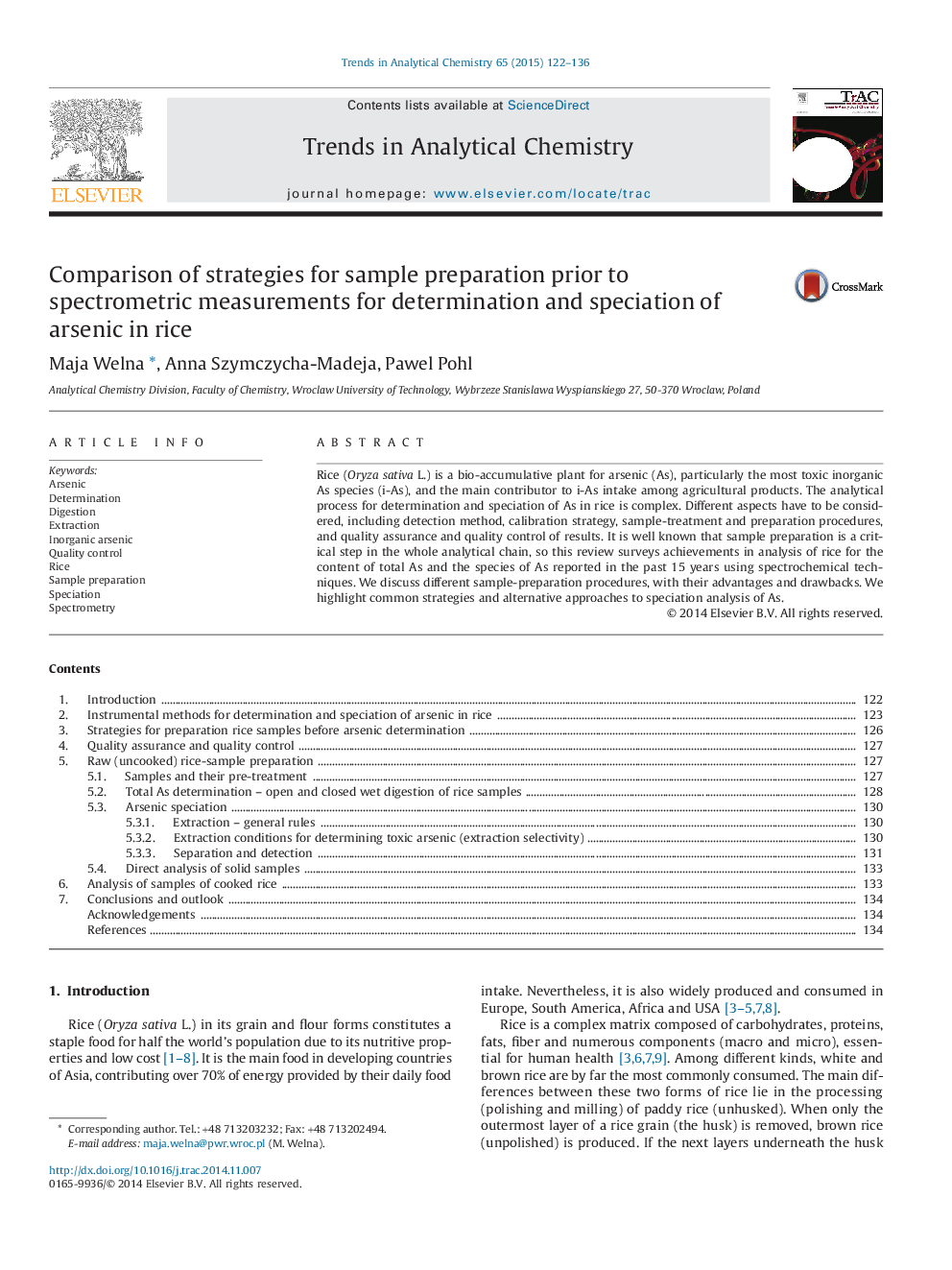| Article ID | Journal | Published Year | Pages | File Type |
|---|---|---|---|---|
| 1249085 | TrAC Trends in Analytical Chemistry | 2015 | 15 Pages |
•Sample treatment prior to determination and speciation of arsenic in rice.•Different extraction and digestion procedures for determination of arsenic in rice.•Common strategies to speciate arsenic in rice.•Spectrometric methods for arsenic analysis and quality control of results.
Rice (Oryza sativa L.) is a bio-accumulative plant for arsenic (As), particularly the most toxic inorganic As species (i-As), and the main contributor to i-As intake among agricultural products. The analytical process for determination and speciation of As in rice is complex. Different aspects have to be considered, including detection method, calibration strategy, sample-treatment and preparation procedures, and quality assurance and quality control of results. It is well known that sample preparation is a critical step in the whole analytical chain, so this review surveys achievements in analysis of rice for the content of total As and the species of As reported in the past 15 years using spectrochemical techniques. We discuss different sample-preparation procedures, with their advantages and drawbacks. We highlight common strategies and alternative approaches to speciation analysis of As.
